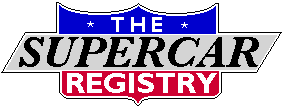

Dedicated to the Promotion and Preservation of American Muscle Cars, Dealer built Supercars and COPO cars. |
|
|
|
#1
|
|||
|
|||
|
In my last post, I said I'd get some "before" pix posted. In hindsight, I should have done this earlier. Anyway, the first photo is of Buford the Buick sitting at the boat launch in Cowichan Bay, BC. I live on Vancouver Island on the far (far) west end of Canada. "Cow Bay" is a quaint little fishing/tourist village on the south east coast of the island. I lived in the area (Cobble Hill) for a few years before moving to the real backwoods <g>. Where I live now supposedly has more black bears than anywhere else in North America. They're not kidding. And all of 'em must live in my backyard! Back to the Buick:
 That same day, I pressure washed the engine compartment as much as I could stand, and then ran the car into my old shop. This is a photo I took after an hour or two of peeling stuff out. It's pretty clear here and in several of the following photos that I didn't pressure wash the thing nearly enough!  At this point, I had the engine and turbo 200 out of the car. Take a look at the crossmember. There was no chance this thing would ever, ever rust <g>. Aside from the oil and grease, the original owner had the car undercoated with that wax-oil stuff. It was wicked to clean with a capital "W". I don't have a photo of the trans tunnel, but that was the worst part. Message to self: You love laying under the car with the pressure washer set on "high". In the process of cleaning up the grease, I literally wore out a dozen brushes of all sorts. Walmart and made-in-China brushes wanted to be my friends.  In the process, I tackled the AC/heater box removal. That thing is the size of a house. Or maybe a Smart Car. I eventually decided that the inner skirts had to come out in order to clean up the mess. I should have removed them before I pulled out the AC/heater box. It would have been a whole bunch simpler. Hindsight is a wonderful teacher ainít it?   Here's a photo of the car after the scrubbing and pressure washing was more or less complete. You can see how the paint came right off the frame. I used a considerable amount of spray on engine degreaser. For the tough stuff, I'd resort to brake cleaner and hot water hooked directly to the pressure washer. I don't have a lift, so the underneath part of the equation was miserable.  Once that was done (and I'll be the first to admit the cleaning process took weeks of my spare time instead of days), I stripped out almost everything from the engine compartment and masked/taped what little remained. Then I sprayed it with semi-gloss black. I found a near match to the Buick offset too: It's paint for a John Deere tractor. They have two different glosses (one is called "Blitz Black"). One matches the firewall perfectly and the other seems right for the frame. I can't take credit for finding Blitz Black (rattle cans or bulk). The street rodders discovered it long before me. The parts guy at the John Deere dealership I bought it from told me he can't believe how much of the stuff he sells. He didn't know why. I didn't tell him <g>. Oh. See the Moroso frame mounts? I didn't miss a bolt. That's how they're installed. One mount fits both sides of the car and that's where the extra unused hole comes from.   So that's how the project actually began. While this was going on, Mike Pustelny was busy making sparks fly on the rear end housing. Meanwhile, I was melting my credit card ordering parts <g>. Down the road, I'll round up some photos of how the frame was notched. That too turned into a great fab job Ė this time by an outfit that specializes in some (super) nicely turned out sprint cars here on the Island. I definitely would have used MPR's services for this job too, but his shop and mine are 2597.33 miles (and one ferry ride) apart. I hope you folks find this a wee bit interesting. Wayne Scraba |
|
#2
|
|||
|
|||
|
I figured I'd show some photos of the front suspension pieces fitted to the Buick along with some various engine compartment shots. My idea for front suspension was to swap out the OEM a-arms for a set of tubular aftermarket models. There are plenty of different shapes and sizes of a-arms out there. Some are really good. Some (as you can well imagine) are really bad. The ones I chose are from AutoFab Race Cars. I really liked them because not only were they (extremely) well built, they were built from 4130 steel (chrome moly) and were nicely TIG welded (which is pretty much mandatory with 4130). Another big bonus was the fact they used large rod ends on all four (per side) mounting points. I should also point out that in stock form, there is quite a bit of camber change when the suspension on these cars goes through its travel (similar to the antics of something like an earlier GM A-body). Much of that camber change is fixed with the geometry of the AutoFab a-arms. Here's a photo of the a-arms as delivered from AutoFab.
 I decided to make a few mods to the a-arms. Like the rest of the car, I swapped the supplied rod ends for high strength 4130 jobs from Aurora (they're almost $60Ö.eachÖYikes!). Another question I had was this: The uppers came with nicely machined aluminum cross shafts. On a racecar, you don't concern yourself with potholes and other road irregularities. On a car that sees street use, obviously you do. ďWhat if?Ē entered my mind, so much so I called a pal who is a mechanical engineer and asked him. Although he figured the loads might not be that brutal in this location, he thought it would be safer on a street car to use a steel cross shaft. As a result, I had steel cross shafts machined to replace the standard aluminum models AutoFab supplies. Finally, while the hammer tone powder coating AutoFab uses is of an excellent quality, I didn't really dig the color. So I stripped the a-arms and had them powder coated black. You can see the upper here, installed in the car. In this photo, you can also see the fabbed brake hard lines. I installed armor on the lines anywhere the lines would be vulnerable (actually I used an entire roll of stainless armor for the car).  This photo of the left front shows the upper and part of the lower a-arm. The big bolt that goes through the top of the upper is a suspension travel limiter. Basically, it's a suspension stop bolt used to adjust and limit the amount of movement the front suspension has. The limiters can be backed right off for street use or you can "tie the car down" so that the front has little travel on a super sticky racing surface. I powder coated the spindles and the brake calipers. The flex hoses are from Russell while the frame bracket for the hose is stock, but cad plated silver. Wheel studs are long models and the dust shields are new old stock from GM (okÖI smashed the originals with a pickle forkÖ.twiceÖoops). Springs are stock Buick V6. You can see some of the fabricated brake line in this photo. I spent a huge (Huge) amount of time on the suspension and chassis for this car. I always thought that details really made the difference in any car. I hope it shows up well in the photos (particularly since it likely doesn't seem like much when you first look at the Buick).  The steering box is a new piece from Borgensen. These folks are wonderful to deal with by the way. Everything I've ever worked with from them has been top notch. And service is great too. Someone sent me the wrong pitman arm, and when I asked about it, it didn't take very long for another correct model to be in my hands (next day Fed Ex if my memory serves me correctly). I chose a slow ratio box. There were two reasons for this: It makes parking easier with manual steering and on a fast car, a quick ratio box is, uhm, rather delicate from a "darting" perspective <g>. I know someone who used to habitually jerk the steering wheel on the gear change on a 427 4-speed Fairlane. It came back and bit him (the result was a guard rail encounter Ė not pretty)!  Here are a few photos of the master cylinder and brake lines. The master is a Lamb Components modified Mopar unit. This is a darling of the dragstrip. It's light. It's reliable and it's easily adapted to other cars. The only catch is the fitting size (goofy by goofier). Roger Lamb works that out in his modified units. They supply fittings that go to -3 AN. The adapter to the firewall is a billet piece from TRZ Race Cars. What you can't see is a Lamb pushrod retainer captured in the back of the master. It ensures that the pushrod cannot back out (I've had one come out on a Pro Stock style car I had Ė luckily if fell out while servicing the car in the shop Ė I've been nervous about this stuff ever since). The actual pushod (which you can't see) has a spherical bearing that attaches to the brake pedal. The geometry of the stock pedal that is used with Buickís infamous (notorious?) "Power Master" booster arrangement is correct for a manual conversion. All I had to do was have the pin removed (replaced by a high strength AN bolt). These photos also show more of the plumbing. If you recall, I said this was a real pain? I wasn't kidding. Iíll bet there's two weeks of my time plumbing the thing (brakes Ė fuel was another matter entirely). I know for sure that it took 30 feet of certified (origin) stainless steel tubing to get the job done.    Here's why you donít use stainless without knowing the source. I bought a thirty-foot roll of stainless brake line tubing from a speedshop. The price was right. Now I know why. I threw away every piece I flared. Thinking my high quality flaring tool was junk; I tried flaring some small pieces of certified origin tubing I had left over from an earlier racecar-plumbing job. Bingo. It worked perfectly. After doing a bit of homework, I came to the conclusion that the speedshop tubing was most likely sourced from China. Nice. And the name on the packaging was from a name brand brake component supplier.  This is a good look at the uber-cool aluminum radiator Ron Davis built for me. It's the largest rad that can fit in the stock G-Body rad cradle. I had to cut and trim the upper mount to clear the thing (after that was done, I had the top mount powder coated). The rad is huge. Davis' handiwork is over the top too. Beautiful welds. The built-in shroud is tightly sealed as well. The fans are the largest Spal jobs that will fit (Davis provided those with the radiator). You can't see it, but ahead of the rad, mounted on a hand whittled aluminum bracket is a B&M stacked plate transmission cooler. It's fitted with -6 AN ports. Itís a nice piece (and so far, they're made in CanadaÖbut I see a lot of the Hurst and B&M hardware is moving offshore. Yuck).  Here's the anodized aluminum heater block off plate along with an aftermarket cowl piece (when you remove the ac box on these cars, there is no cowl panel remaining). I had it engraved with the Buick logo (the guy who built the plate engraved it). It's pretty cool I think. The round piece with four fasteners in it (top of the delete plate) is a firewall feed through for the coil. The coil takes up residence inside the glove box.  Right now I'm working on finishing the instrument panel. I have a custom GNX style cluster I'm putting together. Down the road I'll include some interior shots and maybe a photo or two of the trunk. I made some neat doubler plates to hold the fuel pump and one of the filters in place, and they show up inside the trunk. Also I have some photos (somewhere on my computer) of the Mark Williams pieces inside the rear end. After all of my years involved in drag racing, I'm convinced Williams builds the nicest rear end pieces in the business. Iíll show 'em to you down the road. Take care! Wayne Scraba and again...  |
|
#3
|
||||
|
||||
|
looking good wayne. You would be my hero and Ill buy you a beer if you put a twin turbo v6 in that beast

__________________
Frank Szymkowski 1987 Mustang GT convertible, scarlet red/titanium, white top and white/red leather, 5 speed, 3.08, factory EQ 1969 GTO Judge Warwick blue/blue, RAIII, 4 speed, tach/gauges, safe t track, flip headlights, 3.55's, ps and radio. |
|
#4
|
|||
|
|||
|
[ QUOTE ]
looking good wayne. You would be my hero and Ill buy you a beer if you put a twin turbo v6 in that beast  [/ QUOTE ] Ha Ha. I'm blushing about the hero part. I'm just a dumb old drag racer. In truth, if you go back through the posts, you'll see I'm eventually going to sell Buford along with my menagerie of big cubic inch rat motor hardware so that I can finance my new online blog/magazine/e-book site (which pretty much will cater to old fart street..err...drag racers and day two musclecar guys like me <g>  . . And if you ever buy me a beer, I'll buy you one back. I have a sneaking suspicion where that might lead  Take care man! Wayne Scraba |
|
#5
|
|||
|
|||
|
Here are a few photos of some of the rear axle parts before I assembled them into the housing. I've used Mark Williams hardware for a long, long time, and as far as I'm concerned, it's the best you can get. Buford the Buick has one of Williams' brute strength aluminum through bolt Pro Street 9-inch Ford center sections. It's equipped with a massive pinion support and as you can see in the photos, the billet caps attach by way of through bolts rather than having threads in the bare center section.
  When you take a look at the rear, you can see how Williams' safety wires the ring gear hardware (it's all ARP pieces). This car has a 3.89:1 ring and pinion. The Detroit Locker is actually a billet steel piece. The yoke is also billet steel and setup for a 1350 Spicer universal joint (the same as used on many medium duty trucks). Aside from the street gear and the Locker instead of a spool, this is pretty much state of the art for Pro Stock a decade or so ago. They have since gone to larger ring and pinions.   These are photos of the axles I used. They're (obviously) from M-W and are large 35-spline jobs (the biggest possible with a Locker). I've used lightened axles from Mark in the past (he offers them rifle drilled with heavily milled flanges), but those are only for racecar use. In this case, the axles were drilled for Ĺ-inch and 5/8-inch wheel studs. I used the honking 5/8-inch drive studs in the car. FYI, to get all of this stuff to fit with a conventional style backing plate (I used 9-1/2-inch early GM midsize parts), the center bore of the plate had to be milled. The axle register on the brake drum was milled (larger) and obviously, the wheel stud holes in the drums had to be enlarged. I'm now on a first name basis with at least two machine shops <g>.    A few folks have asked me if the car actually has an interior <g>. Yes it does! This is a photo of it with the instrument panel removed. The second shows the back seat and the third is of the door panel. Iím pretty sure the interior is what most would consider to be in pristine condition. There are still places where the factory shipping plastic wasnít completely removed.    I removed the console because I wanted to run one of these shifters. It's built by Precision Performance. They're big in drag racing with air shifters. I had them build me one in a more conventional hand shift mode. I had the carpet section made up to cover the floor where the console once lived. This little mod actually proved trying. Plan "A" was to simply swap the original carpet for a repro from the, uhm, well known restoration carpet place (since GM cuts the carpet under the console). SoÖ..I stripped the seats out of the car and ordered the carpet and it eventually showed up. As soon as I opened the box I knew I was in trouble. It was (a whole bunch) more brown than GM Carmine. Then I put it in the car. The fit was worse than horrible. Plan "B" was to create a removable center section. After a couple of tries, the upholsterer got it right. There are four snaps used to hold it in place. By removing a snap, there's access to the cable or to route wiring.  Here are a couple of shots of the instrument panel. The panel surrounding the radio is a cool aftermarket piece that allows for the heater delete. I decided to keep the factory AM-FM and the cigar lighter. As you can see, the cluster is out of the car.   At this point, I've reassembled the dash but the actual instrument cluster still isn't installed. You would not believe how much plastic (and how many small screws) is involved in these dash assemblies. Back in the day, I wouldn't have wanted to be the squeak and rattle guy at the Buick dealership. It must have been a nightmare, but I'm getting off topic. I opened up the OEM dash harness connector and peeled out the wires I'd need for a new instrument panel. I used three weatherpack connectors Ė the big one does everything except for the turn signals. Each signal indicator has it's own weatherpack. I use a lot of weatherpacks in cars. Once you get the hang of assembling them (MSD sells the necessary tools and weatherpack parts), it's pretty easy. I like them because they make for extremely reliable connections.    This is a look at what I'm installing. I built this setup with a custom aluminum panel (anodized black) and eight gauges from SpeedHut (Revolution Gauges). Included in the mix is a tach, speedo, fuel level, voltmeter, oil pressure, water temperature, transmission temperature and fuel pressure gauges. These are all stepper motor instruments. That allows them to be super shallow and of course, to have 270-degree sweeps like a mechanical gauge. The wiring harness assemblies for the senders are similar to the mil spec stuff you see on aircraft. There are ton of options available too. For example, the tach has a three-stage shift light. There are "low" and "high" warnings on some of the instruments. The odometer is a digital readout. Gauge bezels have a polished stainless look and they match the trim in the Buick office. I chose a cobalt blue back light package and traditional red pointers (you can select all of this stuff). It's uber cool, but I screwed up. I had it all assembled, but forgot to order turn signal indicators and a high beam indicator in the speedometer. So that's why it's not in the car. I'm waiting for a speedo with those features (supposedly, in transit).  Once the cluster is completely installed, I'll shoot some photos and add them here. I should track down some fuel system pix too. I sweated some details on that and I think it came out pretty nice too. And by the way, thanks again for letting me indulge myself here! In the meantime, Happy New Year! See ya' next year. Wayne Scraba |
|
#6
|
|||
|
|||
|
I figured Iíd share the fuel system build on Buford, and maybe at the same time give you some insight into how I assemble AN hose and hose ends. I picked up my first piece of AN hose (and hose ends) in 1978 and Iíve been using it ever since. Over those years, Iíve managed to pickup a tip or two (and theyíre included below). None-the-less, hereís how I build and test fuel lines: The first step is cut the line. A fine tooth hacksaw is what most recommend, but I like this better. Itís a cut off wheel on a 4-1/2-inch angle grinder. It works super slick and leaves fewer stray wire ends. By the way, I wrap the hose tightly with duct tape, and then clamp it before making the cut.
 Next, tap the junk out of the cut hose. I usually give it a blast of compressed air too.  Push on the hose end socket. Sometimes you have to twist it a bit to get the hose to seat correctly inside the socket. This is where a nice clean, square cut on the hose can pay dividends.  I always mark the hose behind the socket before assembly. The reason is the socket (and consequently the hose end) can back out when you thread in the hose end nipple. Itís a rare occurrence, but it does happen once in awhile.  I really like assembling hose with Aeroquipís soft jaws. They have a magnetic insert and you simply drop them onto your bench vise. Slip the hose with the socket into the vise jaws, leaving maybe 1/16-inch or so of the socket above the vise jaws.  You should lube the threads of the nipple carefully before assembly. This is one place where you shouldnít be cheap with lubricant. The best lube Iíve found is from the folks at Aeroquip. Itís designed just for this and definitely makes assembly easier.  Thread in the hose nipple and tighten. Donít use an aluminum hose wrench for this job! Aluminum hose end wrenches are designed to tighten completed hose assemblies to aluminum adapters. If you use it to assemble a hose end, the jaws will flex (open). Itís a quick way mar the fittings. I use a tight fitting Mac open end wrench for this job. I tighten the hose nipple to the point where the respective hexes are aligned and the gap between the last nipple hex and the socket is no larger than a fingernail.  Hereís the finished hose end. I always check to be sure the hose end hasnít backed out (against the mark I initially made).  This is the finished hose assembly. What you see here are -10 AN fittings and hose. Other sizes and shapes (bent tube and so on) are similar to work on. The only exceptions are hose ends for Teflon line. I donít like making those at home, and prefer to use crimped ends for those applications.  Not done with the hose end yet. Next, I install a set of Earlís test fittings (note the use of aluminum wrenches Ė this is where you use Ďem).  At this point, I charge up the completed hose with twenty of so pounds of air.  Then itís off to the sink to test for leaks. See the bubble? This hose end was simply leaking at the flare (I didnít tighten the test fitting enough). But itís still better to test this stuff before it goes on the car.  The next part of my fuel system was the gas tank. I bought (actually, my wife bought me) a new Turbo Buick gas tank. The old one was perfect. I just donít like having fab work done on a used gas tank. Additionally, the repro tanks have metal internal baffles around the sump. The OE Buick Turbo tanks have plastic baffling. One of the steel AN bulkhead fittings is for the pickup (the larger -10 size). The smaller fitting on the left is for the pump by-pass (return line).  I built this -10 AN hose to go inside the tank to the pickup. The end you canít see is slash cut. Internally, the hose is captured inside the tank baffling (by peening one baffle over another) so that the slash cut end resides in the rear section of the sump.  See the string? See the duct tape surrounding the sender hole in the tank? My arm just fit in the hole, but it was so tight I couldnít risk losing the wrench inside the tank (the baffling is pretty convoluted). Since the AN wrench is aluminum, using a magnet to fish it out wouldnít work. So I tied a string to it and if (when) I dropped it, I could fish it out. The duct tape around sender hole saved me from going to the local clinic for, uhm, personal repairs <g>. Itís a bit of a reach to get to the fitting, but I got it done.  This is the pump I used. Itís a bad boy setup from the folks at MagnaFuel. In reality, MagnaFuel is one of two (reliable) companies that are used by Pro Stock teams for fuel delivery (Weldon is the other one). MagnaFuelís stuff is like jewelry. If you fondle it, youíll know what Iím talking about. Anyway, the pump is a flow through model. That means the fuel passing through cools the pump, allowing it to function full time (continuous duty). Itís actually engineered for fuel injection use, but can be adapted for a carburetor with a different regulator and by-pass valve. As you can see by the tape measure, itís one honking fuel pump.  Hereís the by-pass setup (stainless steel). Thereís a big needle inside that operates much like a carburetor bowl needle. Reach a specific fuel pressure level and fuel is bypassed back to the tank. What this does is to reduce the aeration in the fuel by a considerable margin. Fuel pressure is very stable with this setup (you donít see surges that you see with other pumps). By the way, these pumps can pull a prime; so mounting it above the gas tank isnít an issue.  The folks at MagnaFuel recommended that I use two filters Ė one before the pump and one after. Like the pump, these are massive. They have internal filter elements that are easily cleaned or replaced.  Youíve probably seen this view before. Itís the mounted pump and pre-filter installed under the rear axle kickup. Given the size of the pump and filters (not to mention the inlet lines are -10 AN), packaging was an issue. This was the only likely spot, but I was really concerned about ripping the sheetmetal due to the weight of all of the components.  After looking through several aircraft airframe repair manuals I have on hand, I figured the solution was to use a couple of doubler plates Ė one for the fuel pump and one for the filter. The idea here is to distribute the load and prevent the pump and filter from tearing the kickup sheetmetal. The doublers were fabbed to size, and then installed with -3 AN fasteners.  This is a birdís eye view of the trunk. You can see the filter and pump doublers on the kickup. I can cover them with a trunk mat, but I think they look good they way they are.  From the pump, fuel goes forward to the after-filter shown here. I installed it on the passenger side frame rail, just ahead of the lower trailing arm pickup point. The clamp is an aircraft fuel pump piece from Weldon. Part of my plan was to make both filters accessible. Thereís no point hiding this stuff, but I wanted it away from the scrub line.  The fuel line is -8 AN out of the pump. I routed the line inside the OEM frame rail channel. Itís clamped by way of Adel aircraft clamps, and bolted to the channel by way of short -3 AN fasteners. I usually measure the distance between clamps and make them all equidistant. I think it makes it look nice under the car <g>.  The fuel line wraps over the frame rail near the leading edge of the door. Here it runs upward in between the fender and the inner fender. I installed a -8 AN bulkhead fitting on the inner fender. That allows the fuel line in the engine compartment to be easily removed and installed.  This is the MagnaFuel high flow regulator. It can be installed right on the engine. Moroso has recently released a bracket that allows this regulator to be installed on the carburetor (between the respective studs on the passenger side). In the case of the Buick that means a relatively short -8 AN line can run from the fender to the regulator. Like other components from MagnaFuel, itís a gorgeous piece of machining.  And thatís it. I think Iíve covered most of the construction, at least in abbreviated form. I also hope didnít mind me sharing these vignettes of Buford the Buick on your website. Thanks folks! Wayne Scraba  |
|
#7
|
|||
|
|||
|
Wow!!..........Talk about "Neet" how to do things
 .......very Informative Wayne .......very Informative Wayne  ......Great Job!!! ......Great Job!!!   ......Again.......Talk about attention to Detail ......Again.......Talk about attention to Detail  Ken 
__________________
 The Best things in life......Aren't Things |
|
#8
|
|||
|
|||
|
Hey man...thanks for the Kudo's!
Wayne Scraba  |
|
#9
|
|||
|
|||
|
Wow, I really admire your attention to detail.
You're quite the craftsman.
__________________
1968 Camaro Ex-ISCA Show Car - Sold  On The Lookout For My Next Classic... John 10:30 |
 |
|
|